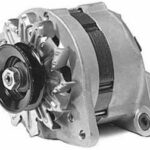A travel trailer is a vehicle attached to an automobile and used as a portable home or as a place of business, usually supplied with furniture, kitchen facilities, bathroom, etc. There are plenty of enthusiasts on the Internet informing you how to choose the correct travel trailer that is appropriate for your needs. We will give you some modes that you should always look for because this will give you just what you will need for your journey.
A trailer can also be called a vehicle itself. Since it is a vehicle, it should also have conditions that guarantee security and reliability like brakes, break lights, and electrical systems connected to the vehicle. It is even required in some countries to have their trailer a license plate to assure safety if ever they use it down the road.
In choosing a trailer, you must consider its general structure. Its parts and build should be strong enough to overcome the time and harshness of use. By this, you will make use the best of your money. For the frame, they usually use I-beam, C-Channel, or L-Channel constructions. The tubular form, made of steel or aluminum, is the strongest among these constructions. Depending on the weight of the carry, the strengthening members that crisscross the frame should have at least 16-inch to 24-inch gaps. And the more strengthening members that crisscross the frame, the higher of durability it gets.
Plan and arrange also the things you want to carry, store, or convey. If you want to bring spoilable things like foods and beverages, accordingly, an insulated trailer would be the most suitable to use. With an insulated trailer, if you are carrying high moisture cargos, it should be that your trailer has a moisture barrier so that your carried loads will not be spilled off to the ground or for whatsoever preventive purposes. But first and foremost, remember to always bring extra anchors to secure the load, wiring for binding up, and something else that will stabilize and balance the trailer or to keep together the trailer attached to the vehicle. This is for precautionary measures.
The brakes have several types of systems – electrical, hydraulic, or a mix of those two. The hydraulic system joins the trailer’s brakes to the vehicle. You must also use a fluid coupling. Fluid couplings enable the fluid to travel through allowing also for the brakes to run. On the other hand, electrical systems use electro-mechanical actuators which trigger the brakes. The force of the brake depends on the user’s force by dragging the braking pressure. And on the other tip of the hand, the combination system has electrical connections but a separate hydraulic system. To activate the trailer’s brakes, it is still triggered by electro-mechanical actuators and will then convert the electrical energy into mechanical energy, making the brakes to actually work. Now we are able to distinguish how the three systems work differently.
You are to check also the hitch, hooks and other hardware. These should be tamper-proofed to prevent disaster. For a softer ride, have your torsion suspension made of rubber. But for the heavy cargos, it is suitable to have your torsion suspension made of leaf spring. To avoid the trailer from going off course when the hitch failed or jarred loose because of a bump of the road, you should have hitch chains for the trailer.
Also, be sure to check its warranty. Through warranty, you are assured to obtain help if ever your trailer has failed itself in which you are sure that it is not your fault. Remember if they offer a longer period of warranty, the higher the trailer’s potential. You should always take into consideration the cost and need in purchasing a travel trailer.




